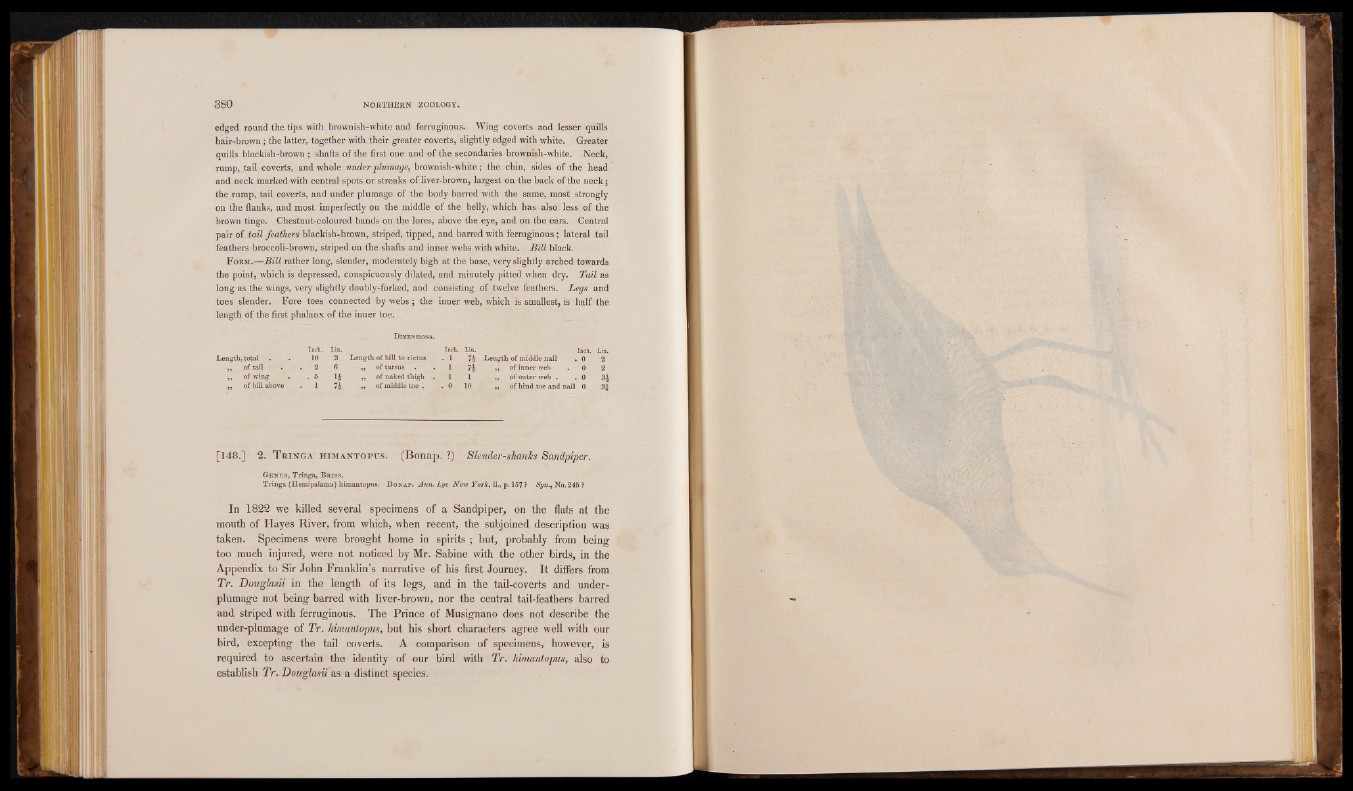
edged round the tips with brownish-white and ferruginous. Wing coverts and lesser quills
hair-brown; the latter, together with their greater coverts, slightly edged with white. Greater
quills blackish-brown ; shafts of the first one and of the secondaries brownish-white. Neck,
rumpj, tail coverts, and whole under plumage^ brownish-white; the chin, sides of the head
and neck marked with central spots or streaks of liver-brown, largest on the back of the neck ;
the rump, tail coverts, and under plumage of the body barred with the same, most strongly
on the flanks, and most imperfectly on the middle of the belly, which has also. less of the
brown tinge. Chestnut-coloured bands on. the lores, above the eye, and on the ears. Central
pair of tail feathers blackish-brown, striped, tipped, and barred with ferruginous; lateral tail
feathers broccoli-brown, striped on the shafts and inner webs with white. Bill black.
Form.—Bill rather long, slender, moderately high at the base, very slightly arched towards
the point, which is depressed, conspicuously dilated, and minutely pitted when dry. Tail as
long as the wings, very slightly doubly-forked, and consisting of twelve feathers. Legs and
toes slender. Fore toes connected by webs ; the inner web, which is smallest, is half the
length 6f the first phalanx of the inner toe.
Dimensions.
Length, total 1 0
Lin. 3 Length of bill to rictus . Th' lt§ Length of middle nail . 0
Lin.
„ of tail . I 2 6 ,, of tarsus . . 1 7£ ,, of inner web . 0 2 of wing • . 5 1 § „ of naked thigh . 1 1 ,, of outer web . ,, of bill above . 0 3* 1 7i „ of middle toe . . 0 10 „ of hind toe and nail 0 3|
[148.] 2. T r i n g a h im a n t o p d s . (Bonap. ?) Slender-shanks Sandpiper.
Ge n u s , Tringa, B r is s .
Tringa (Hemipalama) hircantopus. B o na p. Ann. Lyc. New York, ii., p. 157 ? No. 245 ?
In 1823 we killed several specimens of a Sandpiper, on the flats at the
mouth of Hayes River, from which, when recent, the subjoined description was
taken. Specimens were brought home in spirits ; but, probably from being
too much injured, were not noticed by Mr. Sabine with the other birds, in the
Appendix to Sir John Franklin’s narrative of his first Journey. It differs from
Tr. Douglasii in the length of its legs, and in the tail-coverts and underplumage
not being barred with liver-brown, nor the central tail-feathers barred
and striped with ferruginous. The Prince of Musignano does not describe the
under-plumage of Tr. himaniopus, but his short characters agree well with our
bird, excepting the tail coverts. A comparison of specimens, however, is
required to ascertain the identity of our bird with Tr. himantopus, also to
establish Tr. Douglasii as a distinct species.